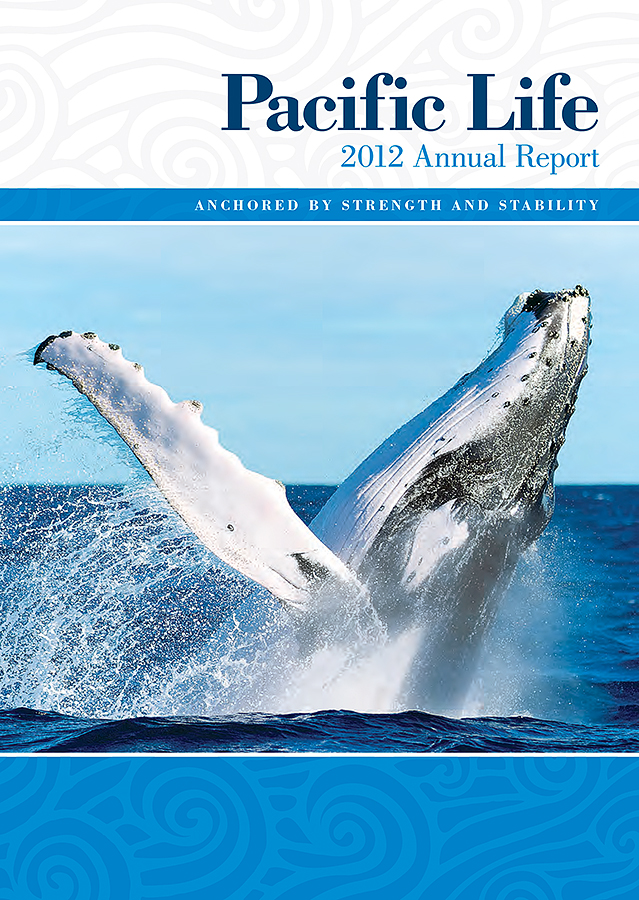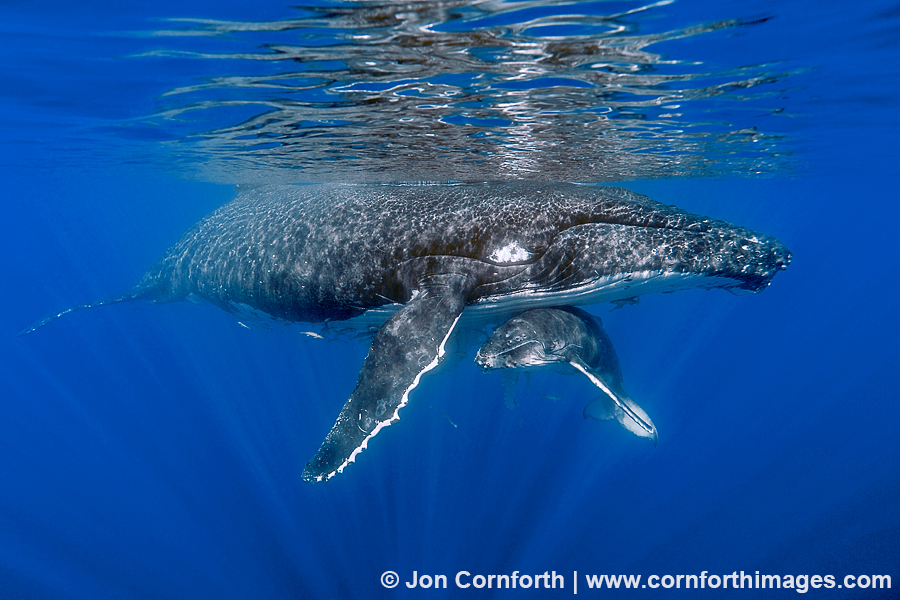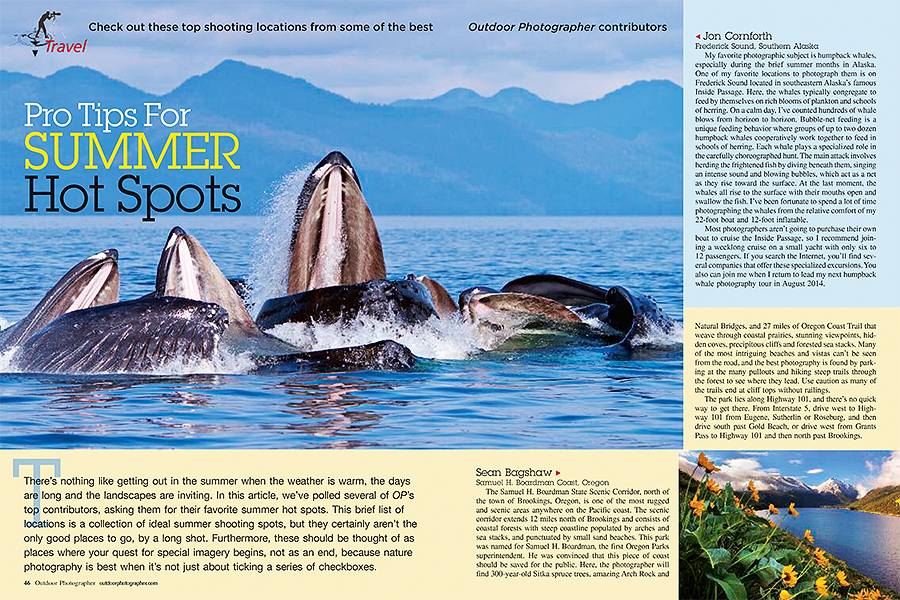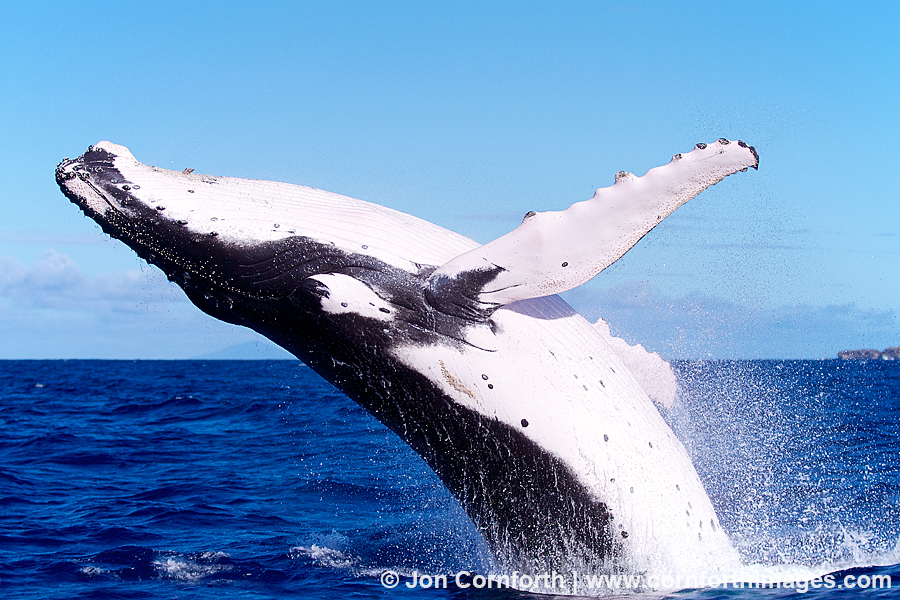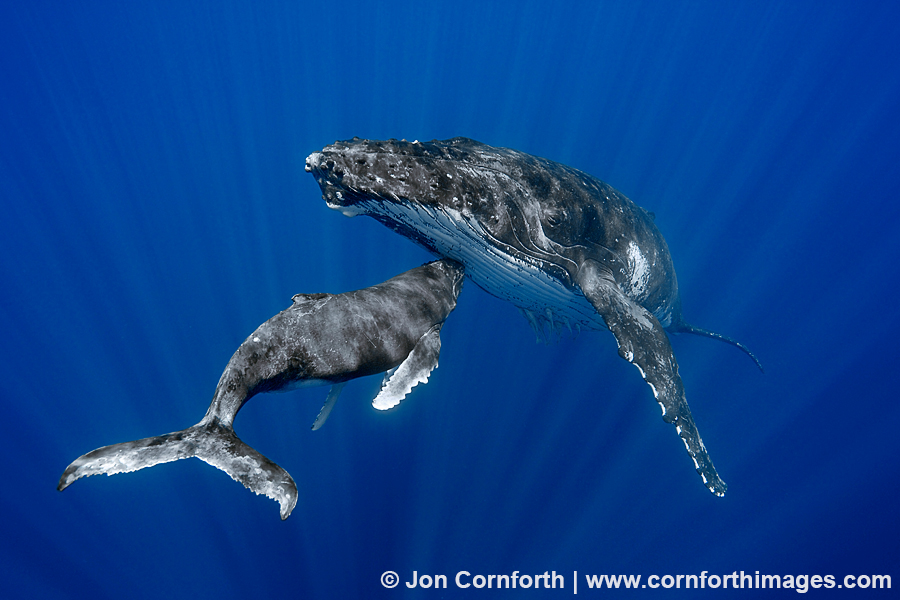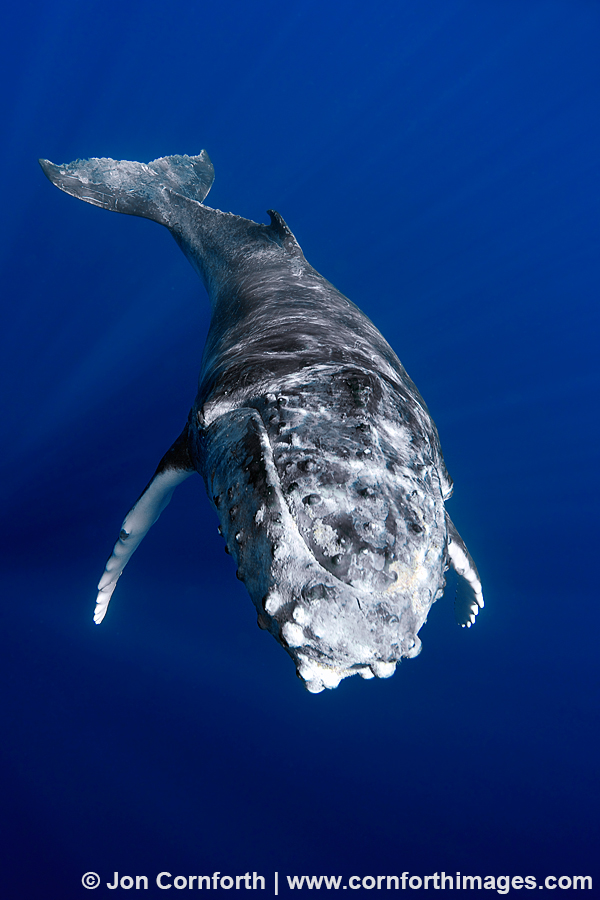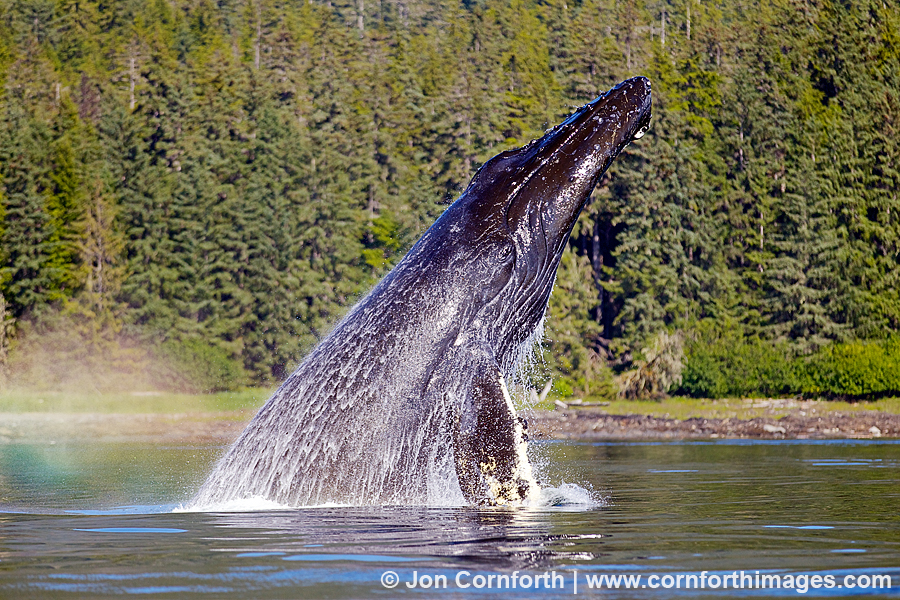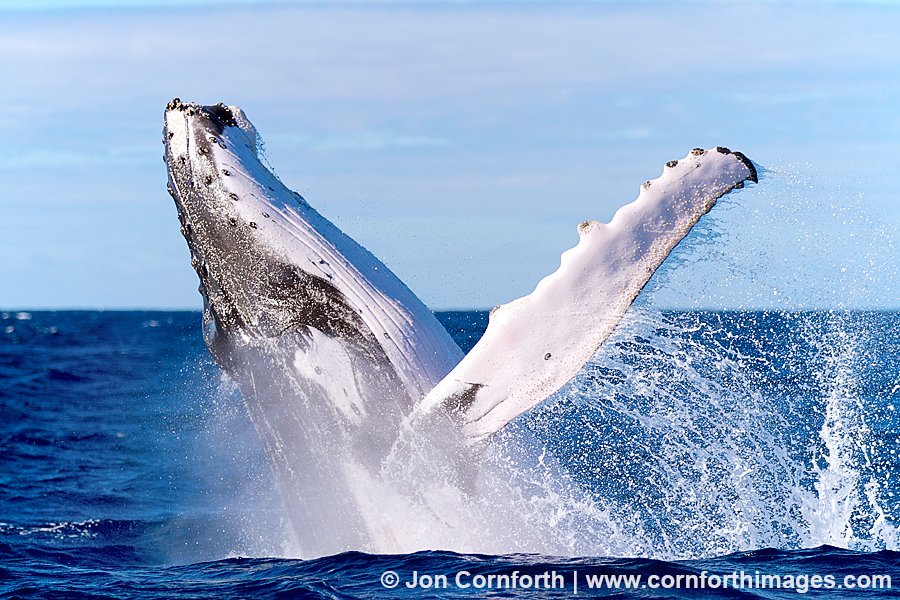Recently, I have been rethinking my workflow and processing techniques. I am not talking about a total overhaul of the way that I edit, but rather becoming more efficient and effective. Processing underwater images requires much more effort than above water images, particularly if I want a gray whale swimming through a blue background. For this reason, I have been holding off on editing my new underwater humpback whale images until now.
Tony Wu and I co-lead an exciting Humpback Whale Photography Tour in both Alaska and Tonga last summer. This beautiful portrait is from our first encounter with a friendly mother and calf in Tonga. Momma was resting about 20′ below the surface as the curious calf swam over to check me out and pretty much ran me over. We did not actually make contact, but if I would have extended my arm bent at the elbow I would have been able to touch it. I created this image using my Canon 5DmkIII and Canon 17-40mm f4 lens inside my Ikelite 5DmkIII housing with an 8″ dome port. I processed the RAW file using Aperture 3 and Photoshop CS6, plus I applied Nik Color Efex 4‘s white balance filter.
